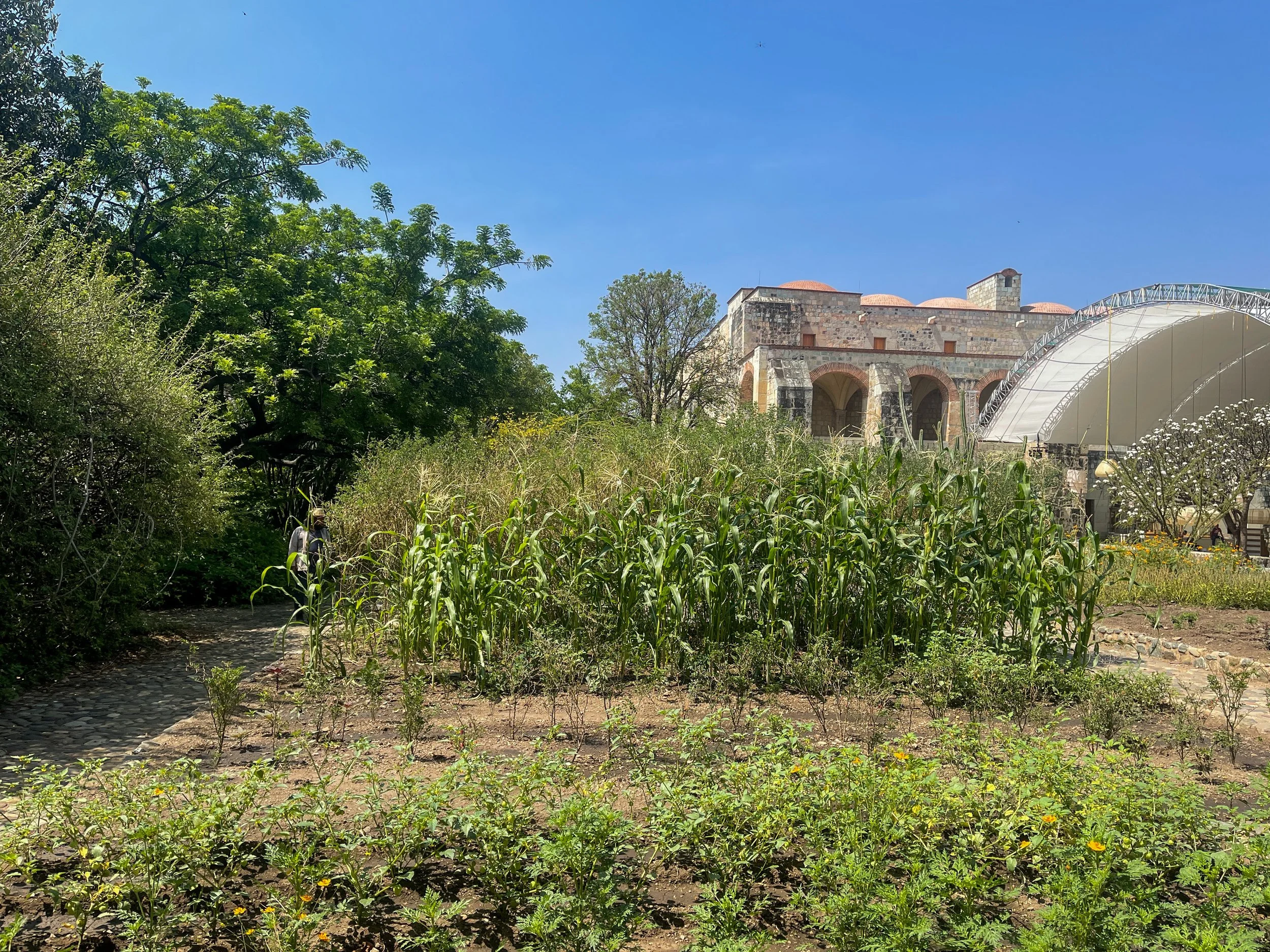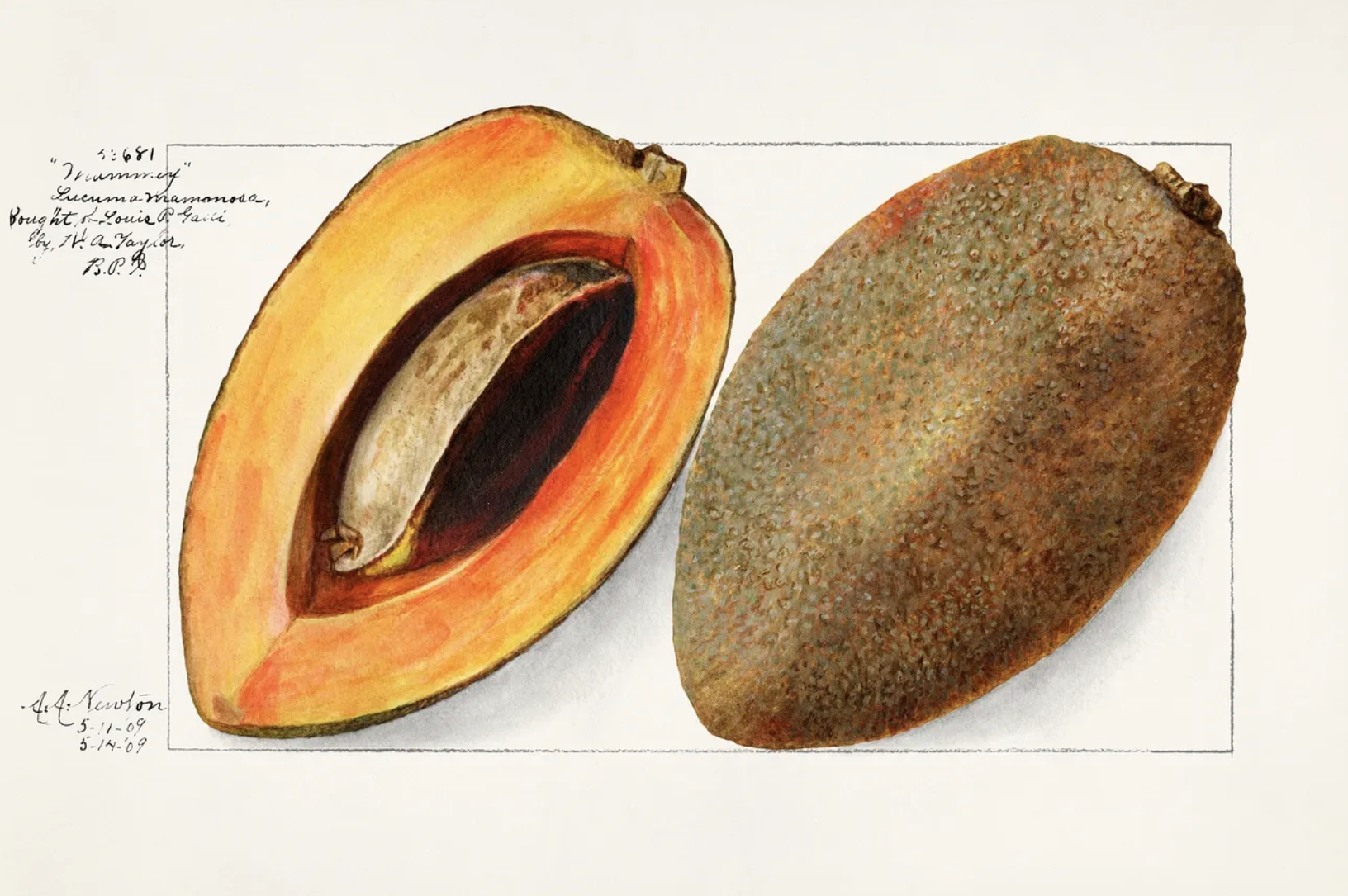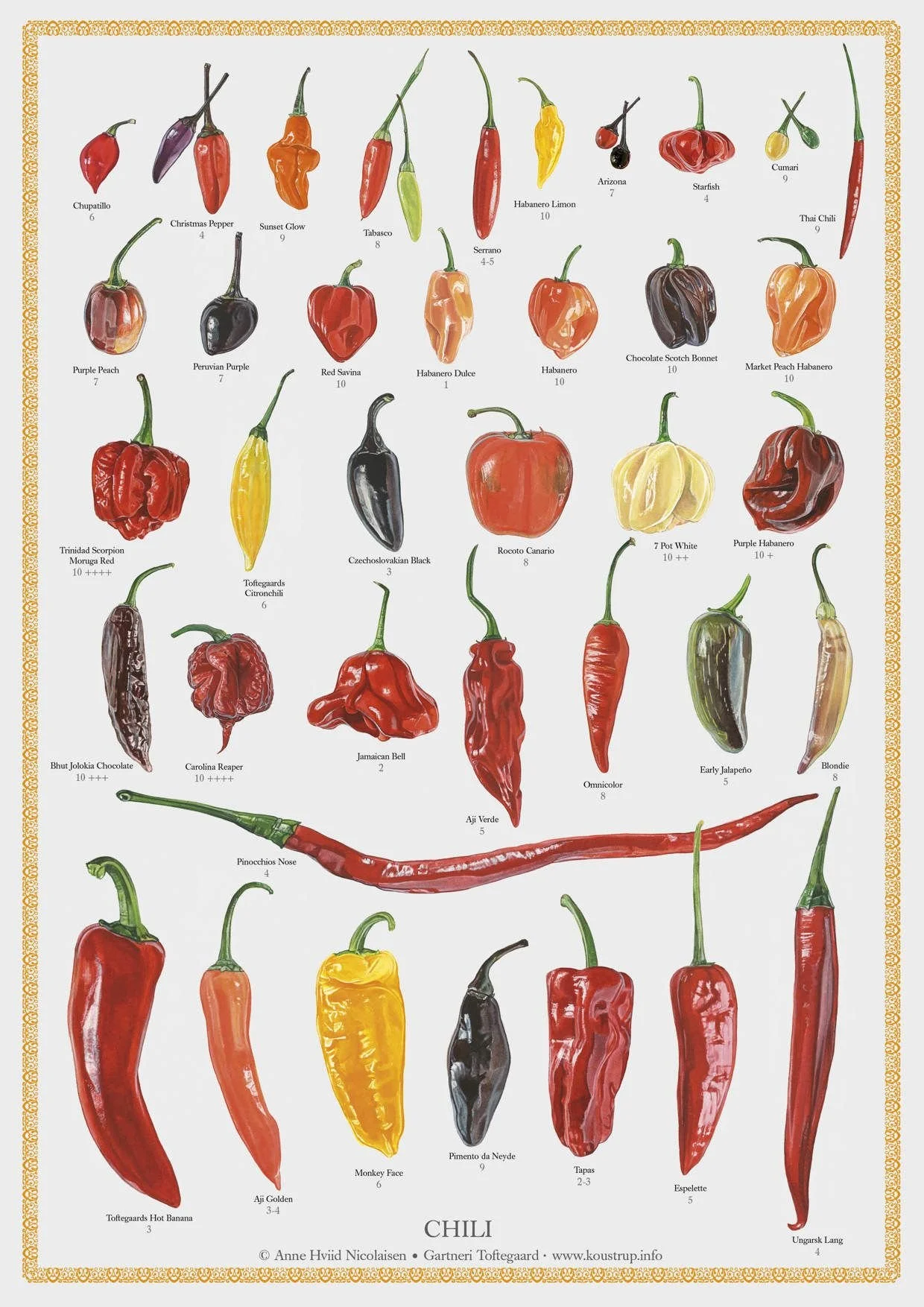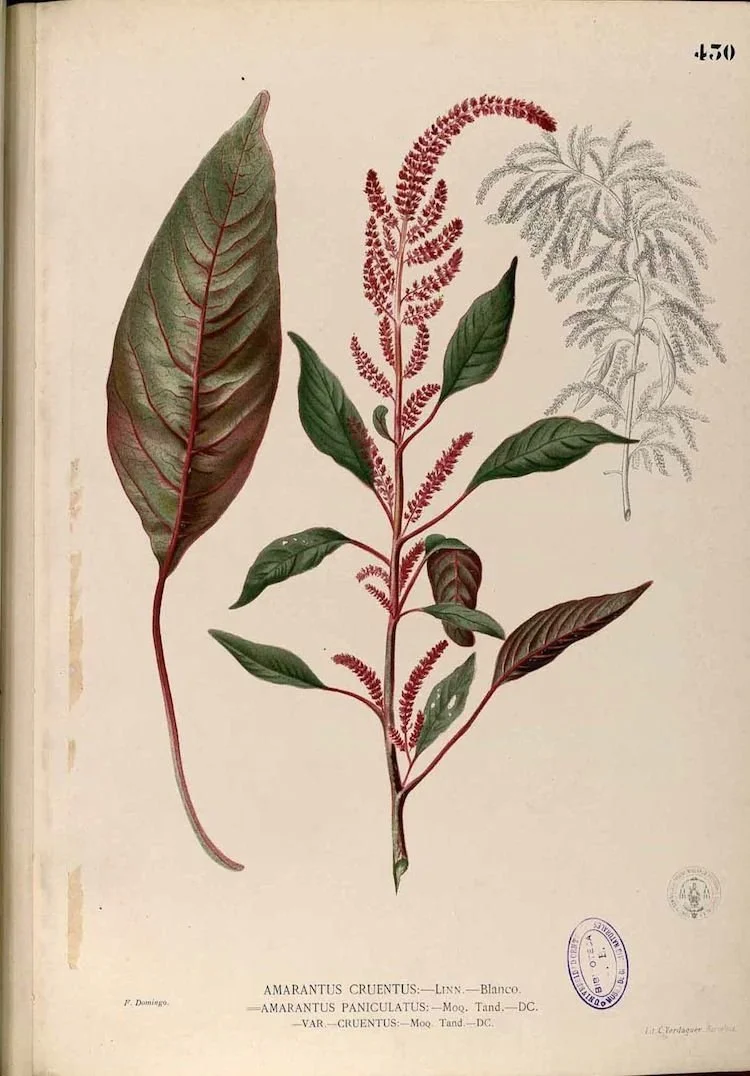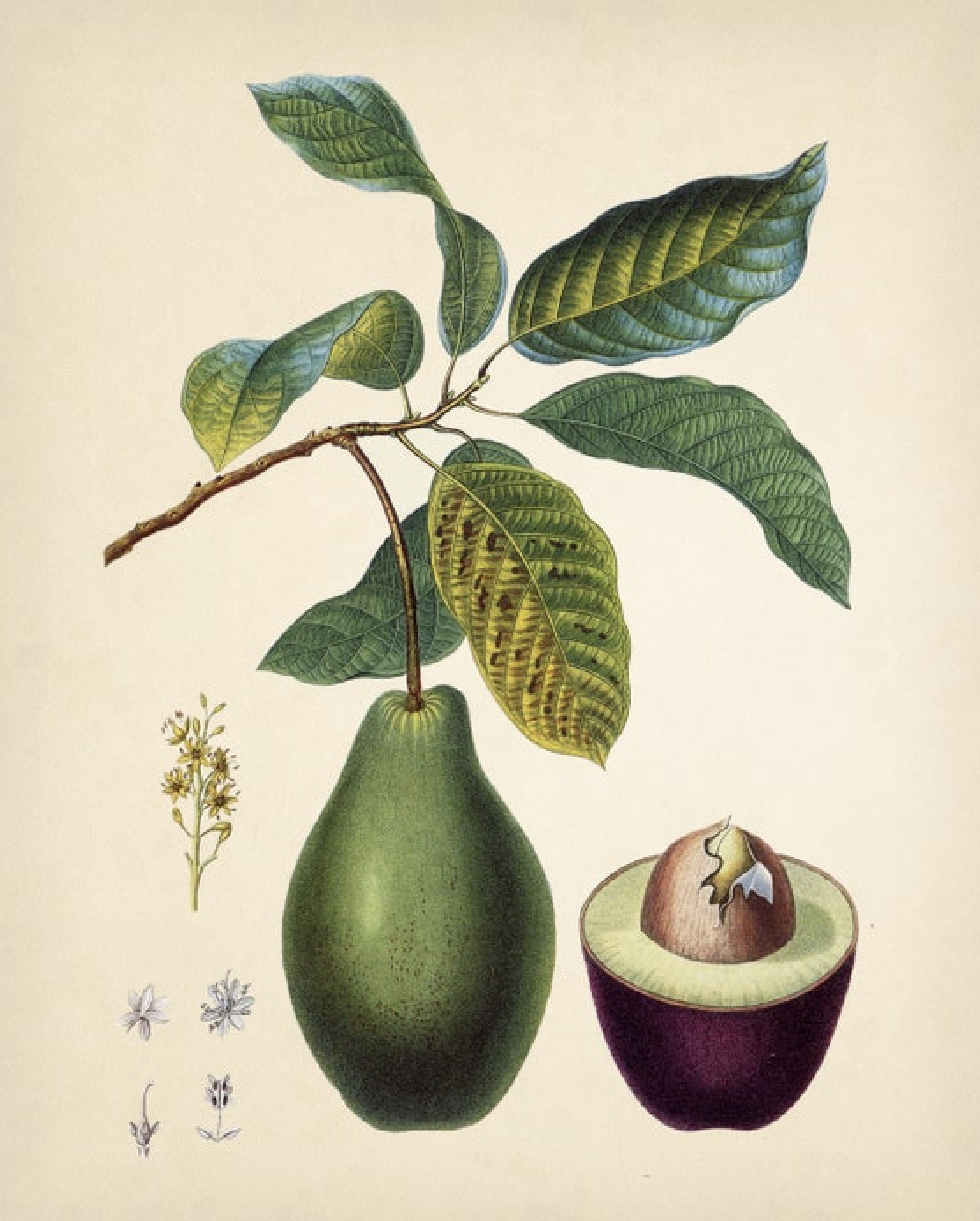Maize, squash, chili peppers, amaranth: Many food plants were domesticated in Mexico. Learn more on a tour at the Jardín Etnobotánico de Oaxaca.
The first part of our tour of the Oaxaca Botanical Garden covered the many food plants grown there.
“I will show you plants that are edible,” said Carol, our guide extraordinaire at the Oaxaca Botanical Garden. “I hope you try them someplace. But not here.”
“Corn was very likely domesticated here in Oaxaca. It’s the most widely planted cereal grain today in the world — more than wheat or rice.”
The first part of our tour of the Oaxaca Botanical Garden covered food plants. Here Carol, immensely knowledgeable and quite funny, explains them in her own words:
What was the first domesticated food plant in the Americas? All signs point to squash.
The Beginning of Food Domestication: Squash
Corn, beans and squash — that famous trio that everybody knows, those plants domesticated here in the Americas that have been so important for so many thousands of years.
The earliest evidence that so far has been discovered for a domesticated food plant in the Americas is squash. The evidence comes from right here, from an archaeological site located here in the valleys of Oaxaca. It’s a site called Guilá Naquitz. Archaeologists found clear evidence of domestication of food squash dated about 8000 BC.
When we think of squash as a food, we usually think of the fruit — but it seems likely that the initial interest in squash as a food plant was for its runners and for its flowers. And, subsequently, as the plants got bigger, the seeds were important and toasted — and then the fruits themselves.
Yup, that bowl of mush is actually a popular drink in Mexico called tejate.
Cocoa Flower Tree, Mamey and That Strange Beverage, Tejate
While it doesn’t look like a food plant, one tree makes a small white flower that’s edible.
The tree is called, popularly, flor de cacao, or cocoa flower tree. It is not a cacao tree. The flower, however, is an important ingredient in a traditional Oaxacan beverage called tejate. And if you have been walking along the street in Oaxaca or or been to our markets, you have seen tejate — it’s so common here.
It’s a beverage the color of café au lait, and it’s usually kept in a big shallow pottery bowl and it’s got foam or froth on the top — it’s really hard to miss. It’s rather unique looking.
Tejate is a drink made on a maize base. Corn-based beverages are typically pre-Hispanic. So to make the tejate, women prepare the corn in a particular way first. They add real cacao to that — but not a heavy chocolate.
It does have cacao, but it also has the seed of an American tropical fruit that many people don’t know: the mamey. They’re about the size of a large avocado. They’re dark brown on the outside and slightly fibrous. But when you cut them open, they’re gorgeous. They have a soft flesh the color of salmon or peach; they’re lovely looking and delicious. Makes great desserts — look for tarte de mamey or mousse, and they often make it into sorbet, nieve.
Wally and Duke have yet to try a mamey, which they learned about from Linda — but they’re on the hunt for one.
But for the drink, they toast the seed, plus the dried flowers. Grind all that together into a doughy or pasty mixture. If you want, you can add water right away and make the drink, but usually they just let that mixture dry and it crumbles into powder form, dehydrated. In powder form, for hundreds of hundreds of years here, people have had an instant beverage that’s storable, it’s portable. You just add water to drink.
So many peppers, so little time. There are 60 types grown in Mexico alone!
Chili Peppers and Their Healing Properties
Peppers are an American domesticated food plant. All the peppers, and I repeat, all the peppers, were originally domesticated here in the Americas. If you can imagine so many cuisines of Africa and Asia and Europe without peppers. But historically speaking, peppers are relatively recent introductions to those regions.
Peppers botanically are classified in a genus called capsicum. There were five species of capsicum domesticated. Three species were domesticated in South America, one species indeterminate still, and one species definitely here in Mesoamerica. Of those five, it’s the Mesoamerican species that dominates the world. This is called capsicum annuum. It has hundreds of varieties and just about every pepper you know anywhere in the world, regardless of the size and shape, how picante or not — they are all capsicum peppers.
Not surprisingly, Mexico cultivates a greater diversity of peppers than anyplace else. There are 60 named varieties of peppers that are grown here in Mexico. The state of Oaxaca grows more varieties of peppers than in any other part of Mexico. It is no doubt this diversity of peppers used here in Oaxaca that accounts in large part for the richness of Oaxacan cuisine.
Loaded with vitamin C and capsaicin, peppers should be a part of everyone’s diet. Wally and Duke add them to most meals they prepare — and double the amount suggested.
Peppers are very nutritious. I hope everybody’s eating lots of them — they are really good for you. They’re very rich in vitamin C. Going back to pre-Hispanic times, peppers have had medicinal use, and that continues today into the pharmaceutical industry. Modern pharmaceutical companies are using the substance of the pepper that makes it hot. It’s an alkaloid called capsaicin. Everybody knows capsaicin burns your lips and your eyes. I’m sure you’ve all had unfortunate meetings with peppers. But capsaicin also blocks pain signals to the brain. It has analgesic qualities, and it permits greater blood flow to the skin surface. So there’s lots of new products: patches to treat your back and you can get all kinds of new products to treat muscle injuries, muscle aches, to treat arthritis made from capsaicin. Many of those products are over the counter, so do look for them.
Amaranth are super nutritious and are becoming all the rage — though it’s been popular in Mexico since Aztec times.
Amaranth and Alegrías, or “Happiness Bars”
Turning to another food plant, with greenish leaves and red stalks. That is a food plant that I’m sure many of you have heard of but may not recognize: That’s amaranth. It’s becoming very popular again. Amaranth was actually domesticated independently in Asia and here in the Americas. The Asian amaranths are known as leaf amaranths, because the part of the plant that people eat are the leaves. So think spinach — whatever you can do with spinach, you can do with leaf amaranth. And in fact, amaranth and spinach are botanically related.
The species that were domesticated here in the Americas are called seed amaranths. You can certainly eat the leaves when they’re young and tender, but those feathery flower stalks make thousands — who knows? I’ve never counted them — of tiny little black seeds that are edible.
You can eat the seeds as you harvest them. Or you can toast amaranth seeds. And when you toast it, it turns into what looks like tiny little popcorns. This is what we call pop amaranth. You can eat it in this form. You can sprinkle it on top of your cereal, your salad, whatever. Or you can grind it into flour.
The seed amaranths of the Americas are one of those incredibly nutritious food plants — among the most nutritious in the world. There is absolutely nothing bad about amaranth and every good quality to a food you imagine. It was probably the single most nutritious food plant in the diet. Pre-Hispanically, huge quantities were consumed. Huge quantities we know flowed into the Aztec capital Tenochtitlan as tax or tribute paid by conquered areas.
Shortly after conquest, it disappeared as a major food plant. It survived here as a candy. And you can still buy the candy here. Lots of people think they’re sesame bars, but they’re not. They’re toasted amaranth bars. Some are squares, some are round, some are long and rectangular, whatever, but it is amaranth. They have the happy name of happiness bars. They’re called alegrías, and alegría means happiness. My personal opinion is that amaranth’s major flaw is it doesn’t have a lot of flavor. But that’s good because you can add it to so many dishes. But that means that alegrías don’t have a lot of flavor other than the sweetness of the honey that holds them together. So look for the alegrías with chocolate added to them. Those are happier.
Alegrías look much too healthy to be named “happiness” bars.
Twenty years ago, maybe 25 now, NGOs came into Oaxaca to reintroduce amaranth as a cash crop, but also to reintroduce it into the diet, where it could certainly make a significant difference, especially for children — it’s very high in protein.
Restaurants are going back to traditional foods, so look at menus, they sometimes feature dishes with amaranth. And it’s been used in commercial food production — a lot of new products being made with amaranth to increase the nutritional quality.
There are over 60 types of corn grown in Mexico, and the crop is more widespread than wheat and rice.
The Evolution of Corn and the Amazing Spread of Maíz Criollo
We have a young crop there and a more mature crop of corn or maize. That kind of corn is called Creole corn, or maíz criollo, and that refers to the kinds of corn that farmers throughout Mexico and here in the state of Oaxaca grow principally for home use.
To plant a new field of my maíz criollo, households just save some seeds from a previous harvest and replant them.
I grew up in Canada, where corn was yellow. That was it. So all I knew was yellow corn. I sort of had a vague notion there were other colors because at Halloween or Thanksgiving, we bought those bunches of what we call Indian corn, multicolored dried corn. You didn’t eat it; you just hung it on your doors as an ornament. Then as an adult, I learned there was white corn, as well. Ooh! A big addition to my knowledge!
And then I came to Mexico and discovered an absolutely incredible richness that I certainly was not aware of: well over 60 varieties of maíz criollo grown traditionally here in Mexico — different colors, shapes, sizes, growing conditions, flavors, you name it. It’s just an incredible richness.
The state of Oaxaca grows more varieties of maíz criollo than any other part of Mexico. Thirty-seven varieties of maíz criollo are grown here in the state of Oaxaca.
How did we get corn? Where did it all start? Everyone now seems to agree the ancestor is the wild grass called teosinte. It is genetically very closely related to domesticated corn but morphologically very different.
I think everybody knows how to plant corn. You stick a seed in the ground and up comes one stalk. And then you get an ear of corn per stalk, and if you’re really lucky, maybe you’ll get two ears of corn per stalk.
Teosinte is completely different. It’s a multi-stalk plant and it doesn’t grow ears of corn at all — it makes tiny little seed pods. At every node along the stalk, you get seed pods. There’s just a single row of very small little seeds inside, the size of baby teeth.
There is an edible kernel buried at the center of the seed. But to get at the editable kernel, you have to remove the outer seed first. You have to expend a lot of time, a lot of labor, to get very little to eat in return. Why bother?
Moreover, teosinte is a wild grass. When the pod is mature, it just breaks open. There’s no structure in there to hold the seeds. So they just separate and fall out on the ground. And the big question is, why the early peoples began to pay attention to teosinte as a potential food plant? And there’s no good answer to that.
Geneticists suggest that the beginning of domestication, if you will, goes back at least to 7000 BC, or 9,000 years ago. One hypothesis is that early people were not actually interested in the seeds at first, but rather than fermentable sugars in the green stalks. There were other sources here of fermentable sugars that are easier to attain, so who knows?
But the earliest clear physical evidence that we have found for domesticated corn dates to about 4000 BC, and that evidence comes from Guilá Naquitz again, where they found the early fruit squash. Archaeologists found clear evidence that corn has been domesticated by that date. What they found at Guilá Naquitz are little structures, little proto-cobs. So instead of this single row of seeds, there is a structure with several rows of kernels around it. And by this date, the terminals have lost the hard outer seed coating and become fully edible.
Domesticated corn cannot reseed itself. In order for you to reseed it, you have to pick the ears of corn off the stalks, pull down the corn husk, pull the kernels off and replant it. Corn is the only nature of domesticated plants that is incapable of self-reproduction. And by 4000 BC, it had shifted from this self-seeding wild grass to a fruit plant totally dependent on human intervention for reproduction.
Teosinte doesn’t grow wild here in the valleys, but it grows up in the sierra, up in the mountains around the valleys, which is where corn was probably domesticated — a domestication that has been spread rapidly and extensively through the Americas. And because corn is such a malleable plant, it took on the many forms of corn that were found growing here when Europeans arrived, and then quickly introduced to the rest of the world after contact, and again adapted to wherever it was introduced. Corn, for sure domesticated here in Mexico, and very likely here in Oaxaca, is the most widely planted cereal grain today in the world. There’s more corn planted than wheat, than rice.
While the pre-Hispanic peoples of Mexico knew how delicious tomatoes were, the silly Europeans thought they were poisonous!
Tomatoes and Other Plants Domesticated in Mexico
Let me remind you of some other food plants that have changed diets worldwide. And the first that comes to mind are tomatoes. Domesticated here in Mesoamerica. Very important in the pre-Hispanic diet, and quickly introduced to Europe. And for a long time, Europeans refused to eat tomatoes. They considered them poisonous. They bred them as ornamentals; they used them as fodder for animals — but wouldn’t eat them. Imagine!
Avocados — domesticated here. No guacamole without avocados from here. Vanilla and cacao were also domesticated here. By the end of the 1500s, just about every major food plant had gone east and west. They were very quickly introduced and adopted.
Avocados, not surprisingly, were also domesticated in Mexico. Wally shudders to think of a life without guacamole.
Now, that’s a lot to digest about food plants. But it’s astounding how many different domesticated food plants come from the Oaxaca region, with its great biodiversity. ¡Buen provecho!
If you’re staying in Oaxaca, be sure to add the botanical garden to your itinerary. Tours in English are Monday through Saturday at 11 a.m. They’re a steal at 100 pesos (about $5) and last about two hours. The garden entrance is at the corner of Reforma and Constitución. Get there about half an hour early to play it safe; groups are limited to 25 people and fill up quickly. –Wally
Jardín Etnobotánico de Oaxaca
Reforma Sur
Ruta Independencia
Centro
68000 Oaxaca de Juárez
Oaxaca
México

